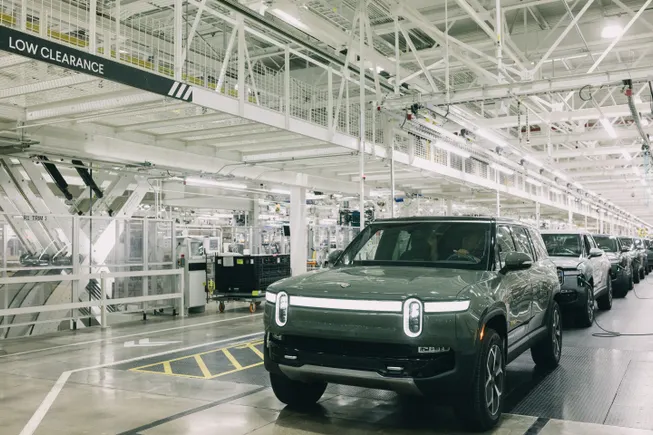Natural Wine Democratized ‘Winespeak.’ But Does It Make Any Sense?
The explosion of natural wine has changed the way we talk about wine, favoring more playful terms that may not always land with the mainstream. [...] Read More... The post Natural Wine Democratized ‘Winespeak.’ But Does It Make Any Sense? appeared first on Wine Enthusiast.
Pete Ternes thinks a lot about how to describe the natural wines at Middle Brow Bungalow, the pizzeria, brewery and winery he co-owns in Chicago.
Most are made from Michigan grapes, but does the average drinker know, or care, what Traminette and Marquette grapes are? Or does it suffice to call them “orange” and “light red”? Does anyone really need to know a wine’s vintage—er, rather—year?
“I think it’s one of those things that is sort of hard to accept, but most of the terms of art around wine don’t need to exist,” says Ternes. “They serve to divide the knowledgeable from the unknowledgeable and create an accessibility problem. This is why our menu changes constantly. We’re not serving accessibility if we’re utilizing terms that don’t do much work.”
Natural wine has exploded in recent years, with sales continuing to rise even as the global wine industry slumps. The category has changed the way many people talk about wine, with its proponents swapping out the staid descriptors of the past for more playful terms that, they argue, some consumers may find easier to understand.
Many who came up through the industry feeling excluded by the old guard are now in powerful enough positions to nudge out its gatekeep-y winespeak (read: “bramble”), in favor of flavor and aroma descriptors that resonate more with non-wine pros (read: “grapefruit juice running down your chin”). Others mostly forgo descriptors by emphasizing tasting instead.
Yet, some in the new school still can’t resist their own, cool kids’ brand of inaccessibility, via cultural references that don’t always land with the mainstream or abstract, occasionally confusing epithets for natural wine that range from “zero-zero” to “resilient.” (What, exactly, is resilience supposed to taste like?)
Even so, many believe the language around wine has never been more approachable. Do we owe it all to the natural wine movement?
Shifting the Vibe
Wine’s approachability problem is well worn and even better documented. For one, the lack of common language surrounding wine results in confusion and awkwardness.
Recent years have brought a flurry of dressed-down yet trendy wine bars that promise us “wine sans pretense,” as Brooklyn’s Rude Mouth puts it. Places like Buddy in San Francisco, Living Room Wines in Portland, Oregon and Outside Voices in Chicago all but reassure us that things here are comfier and even a little irreverent. The decor probably features a disco ball; a server might compare our natural wine’s racy, fresh acidity to an early Karen O song (though perhaps without explaining who she is or what her early music sounded like) or an Austrian Blaufränkisch to a “tailored suit with white tee and sneakers for dancing,” as at the wine bar Ruffian in New York City.
At Rude Mouth, the notion of unpretentious wine has less to do with the wines themselves, “although most of them are low-intervention, nothing added, nothing removed,” says Ava Trilling, Rude Mouth’s sommelier and founder. “It’s more about how the wine is presented, which has to do mostly with service. How do the people pouring wine converse with you about it, ask you questions and taste you on different things?”
The ‘Dumbing Down of Winespeak’
It’s hard to deny the emphasis many next-gen spots put on natural wine, which—depending on your wine-drinking circles—you may hear referred to as “wild,” “low-intervention,” “resilient,” “unfined and unfiltered,” “zero zero” or “natty”—the last perhaps with a trace of sarcasm. It makes sense. Natural wine has proliferated in recent years in the U.S., though it lacks official certification.
“It helped break apart this stuffy upper crust that the wine world historically represented,” says Sam Brogue, beverage director of Flour + Water Hospitality Group in San Francisco. “This has allowed your average consumers, especially younger consumers, to see bottles of wine in their minds as more playful versus stiff, and also more affordable quite often.”
The category’s growth has also come with a refreshing “dumbing down of winespeak,” as Ternes puts it. That often means saying “grape” instead of “varietal,” talking about the actual experience in the mouth (“prickly” or “puckering”) and deploying the oh-so-millennial tactic of placing it in an environment, à la fireside in an A-frame cabin in Michigan’s Upper Peninsula. Abstract or “hipster-speak” descriptors should be deployed with care, Ternes says: “just inside-baseball enough to get them to ask the server what the hell it means.”
Ternes’s constant scrutiny of his own tendency toward wine- and hipster-speak has pushed him to take a proverbial machete to every Middle Brow wine list he writes. For instance, what used to read out as Vidal Blanc and Traminette white bubbles that are “dry-farmed” and “foot-tread” with “no filtration” now simply says, “Vidal Blanc / kiwi juice,” as a more relatable flavor descriptor.
To Some, Even the Word ‘Natural’ Is Too Much
As natural wine has fractured, certain circles fixate on the new dogma of “natural” and celebrate flaws—like cloudiness, funk and mousiness—as the defining characteristics of the category. This has caused some wine pros to pull back from the term “natural” altogether.
“We purposely try and distance ourselves from the natural wine world because it has been mutanized; it’s having its Spinal Tap moment,” says Kashy Khaledi, proprietor of Napa Valley winery Ashes & Diamonds.
Since its founding in 2017, the winery has made wines that technically fall under that umbrella. They’re called zero-zero wines, which Khaledi describes as the purest expression of a wine and vineyard. (However, if he’s talking to a fellow Gen Xer, he’d probably describe them as the wine equivalent of Iggy Pop.)
“Frankly, we’d have called it ‘natural’ if the term hadn’t been bastardized,” says Khaledi. “It’s certainly not a marketing term. People will call us and ask if it means zero alcohol. But I don’t even think [our customers] care! They’re just like, ‘This rosato tastes like Hawaiian Punch.’”
Flour + Water in San Francisco devotes a subcategory of each section of its wine list to “wild” wines, a term that signifies what to expect flavor-wise rather than try to define natural wine’s mushy parameters. These eccentric pours might express kombucha-like flavors or intense, balsamic-like acidity, but more as “beautiful background noise” than dominant characteristic to appeal to a broader swath of drinkers.
“We’re trying to curate these wines so there’s something for everyone,” Brogue says. “The section also acts as this quick nonverbal red flag to those who want more traditional Napa styles.”
The Limits of Language
Rude Mouth tends to de-emphasize descriptive language altogether in favor of having patrons sample the eight-ish wines by the glass and decide for themselves. Aside from explaining where it’s from and who the producer is, a server might say a wine is “lighter, more tart and vibrant,” or “medium bodied, silky and round”—all in the service of helping customers find what they like. Funnily enough, even the sampling portion still breeds confusion, owing to the nagging decorum surrounding wine tasting.
“They’re looking at me like, ‘Now I have to swirl this around and sniff it, right?’” Trilling says. “I’ll tell them, ‘This is just a taste to see if the wine’s OK and good for you.’”
It’s an important little nudge, because it takes the pressure off.
“I’m most concerned about people’s comfort and comfortability around things,” Trilling says. “The last thing I want is for someone to feel excluded or judged.”
Indeed, as natural wine has changed the conversation about how to describe wine, the untethering from tradition has had some unintended effects: “It’s a whole different breed of the pretentious wine snobs,” Trilling says. “It doesn’t matter if your wines are natural or low intervention if you’re making people feel stupid or lesser than for not knowing anything about that.”
Making Wine Ordering Fun
In other words, alienation is still alienation, whether you’re talking about “pencil shaving aromas” like the old school, or glibly calling a wine “pretty,” like the new school.
“What the f**k does pretty even mean?” Ternes says. Of course, Middle Brow is guilty of a bit of wine hipster-speak of its own, being the place that birthed the aforementioned Karen O descriptor. But Ternes stands by its deeper goal, to pique the drinker’s interest and—more importantly—make wine ordering fun through its descriptive prompts. After all, who wouldn’t want to know more about a sparkling white blend that tastes like “a Michigan farmer’s mai tai,” as a recent Middle Brow menu described?
“There’s no doubt people are making really cool wine, doing different things and taking big risks in farming and in the cellar,” Ternes says. “I don’t know if anyone is going to get the word right for what we call it, but the broader market isn’t really interested in that debate. The thing customers want to hear is, ‘Is this a fun wine? Am I allowed to have fun drinking this?’”
More Natural Wine Coverage
- Is “natural wine” too preachy? Some winemakers say yes.
- Read about how natural wine shops went from fringe hangouts to a national phenomenon.
- Alice Feiring has been instrumental in bringing natural wine to America’s consciousness. She reflects on the state of the natural wine movement today.
- If you’ve ever wanted to understand the difference between organic and biodynamic wine, we put together an explainer.

From the Shop
Find Your Wine a Home
Our selection of white wine glasses is the best way to enjoy the wine’s subtle aromas and bright flavors.
The post Natural Wine Democratized ‘Winespeak.’ But Does It Make Any Sense? appeared first on Wine Enthusiast.



















































































![The American contingent and Turkey’s autonomy goals: Paris Air Show Day 3 [Video]](https://breakingdefense.com/wp-content/uploads/sites/3/2025/06/Wednesday-Wrap.00_00_32_21.Still001.png?#)
![A look at the jets flying high above the Paris Air Show [PHOTOS]](https://breakingdefense.com/wp-content/uploads/sites/3/2025/06/Rafale_02-scaled-e1750268097167.jpg?#)























































